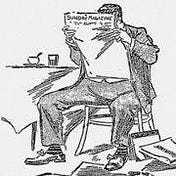
Sunday Magazine
The most interesting New York Times Magazine articles, from 100 years ago to the week
By subscribing, I agree to Substack’s Terms of Use and acknowledge its Information Collection Notice and Privacy Policy

The most interesting New York Times Magazine articles, from 100 years ago to the week